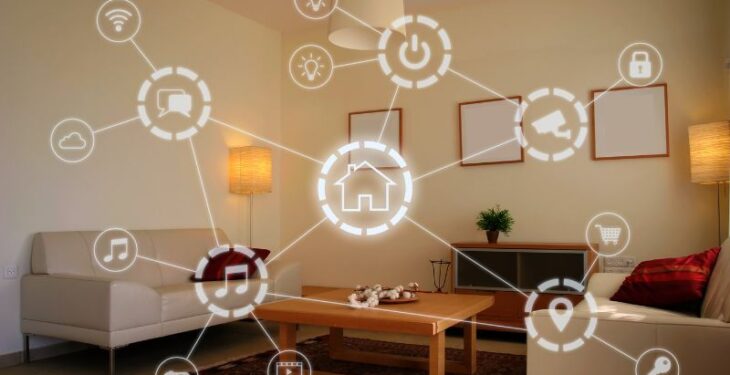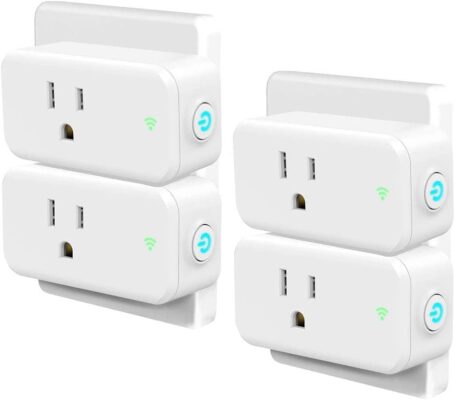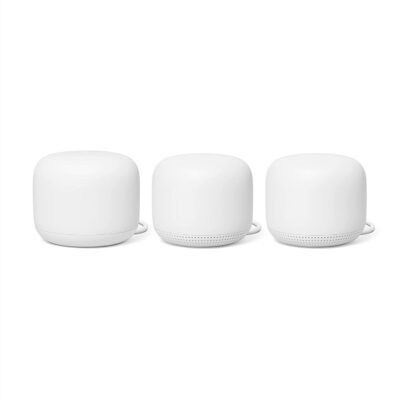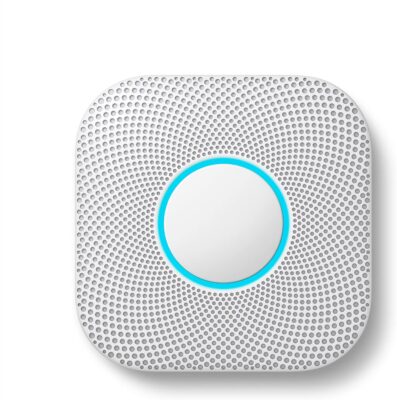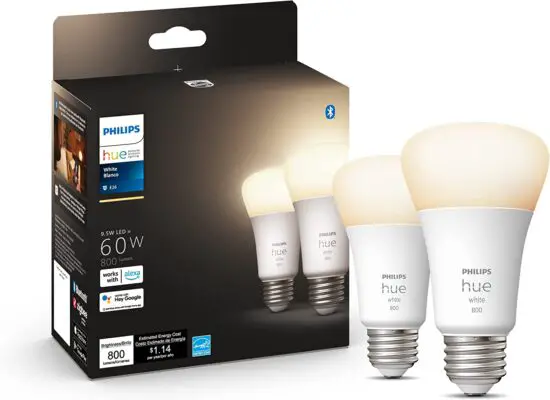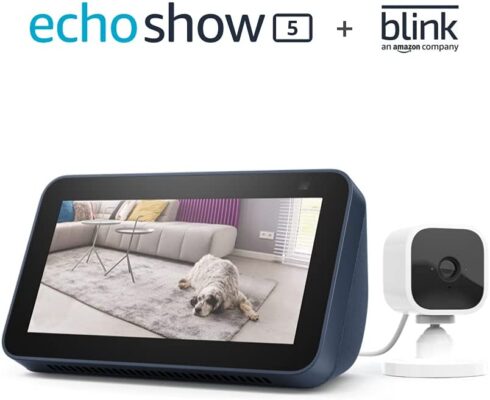If you are eager to know about smart home technology, you are at the right place. Smart home devices and services are getting popular nowadays, and you can easily connect almost every appliance of your house to the home network and monitor everything remotely.
What is Smart Home Technology?
Smart home technology is a term for essential home appliances or amenities that can be collaborated with new-age technologies. These technologies enable the appliances to get automated or get controlled remotely.
These appliances include:
- Appliances like fridges, washing machines, and garage door openers
- Security systems
- Entertainment systems
- Environmental controls, like heating, air conditioning, and lighting
How do smart homes work: Hardware and software requirements?
Home automation works by deploying low-energy gadgets that can automatically ship and acquire information, such as light sensors that locate the rising sun and send instructions to open your bedroom curtains.
You may also have heard the term IoT or Internet of Things. It refers to the Wi-Fi gadgets (along with smart thermostats) that house owners can access data for and ship instructions to remotely thru the internet. Home automation setups usually include IoT gadgets.
A type of wireless protocol was evolved to be used in a domestic automation environment, including:
ANT (network)
This works within the 2.4GHz band and is considered an ultra-low-power contract for Wi-Fi connections. It uses a proprietary protocol initially designed to be used in health and sports activities statistics; however, it is now being applied more often in domestic settings.
Wi-Fi (Wireless)
Homeowners usually additionally have experience with Wi-Fi, such as using it to connect a laptop, tablet, or cellphone to the internet. With Wi-Fi, more power is involved due to the fact this protocol is frequently used to preserve high bandwidth connections.
Your domestic automation setup may need Wi-Fi for a few higher-data applications, which you could discuss with your setup team during your consultation.
Bluetooth
You are, in all likelihood, already acquainted with Bluetooth technology, as it is extensively used to connect objects such as a speaker or wireless headphones to your cell phone. Bluetooth is a superb preference, and developers keep improving it, with a data rate increase from 1 Mbit/s to 2Mbit/s between Bluetooth version 4 and the brand new version 5.
ZigBee
ZigBee protocol is a low-power specification based on the IEEE 802.15.4 standard for private location networks, providing media access control.
It worked withinside the 915MHz band in the USA and was evolved for mesh networking. With this type of networking, your gadgets have a couple of channels to communicate over, letting each and every piece of gadget connect to one another.
Different types of smart home devices?
Amazon Smart Plug
Price – $24.99
How it works:
- It adds voice control to your typical domestic appliances with a plug.
- You can easily set it up within minutes if paired with Amazon Alexa.
- Using power state retention, Amazon Smart Plug makes sure that these appliances to their ultimate states if the power goes off.
- It uses the voice control feature to control your domestic appliances.
How to install it:
- Set the device on the wall.
- Open the Amazon Alexa app
- Click “more” and then click “add device”.
- Select “Amazon Smart Plug”
- Follow the displayed instructions to set up the device entirely.
Google Nest Wi-Fi Router and Point
Price – $139
How it works:
- It has 2 router units
- Thai WI-fi is very flexible and covers around 4400 sq. feet distance.
- The influential network eliminates buffering and allows you to stream 4K videos easily.
- It comes with a 15W power adapter.
- It updates itself automatically to help your network to remain safe and work properly.
How to install it:
- Go to the Google Home app.
- Click “Add Set up device New device”.
- Select the device from the list.
- Scan the QR code present on the bottom of the device.
- The Nest point is connected.
- Follow other instructions to finish the whole setup.
Google Nest Protect – For Monitoring Smoke
Price – $116
How it works:
- This device has sensors to keep you safe.
- Its excellent sensors can check your CO and smoke alarms with a single tap and get a report once the process is completed.
- Connect it to Wi-Fi, and you can get alerts on your phone.
How to install it:
- Put the device near the Wi-Fi router.
- Download the Nest app.
- Make an account if you are new to it.
- Add the device to the app.
- Now scan the QR code on your device
- Tell the location of your device
- Pull out the battery tab of the device
- Connect the device to Wi-Fi.
Philips Hue Lighting
Price – $49.99
How it works:
- You can choose from 16 million colors to change the atmosphere and look of your home.
- It works best with Alexa, Google Assistant, or Apple HomeKit.
- It allows you to take advantage of voice control.
How to install:
- Screw the smart bulb into the desired location
- Download the Hue mobile app
- Pair the device with the app
- Add your overhead lights and smart bulbs with the Philips Hue App.
Amazon Echo Show 5
Price – $49
How it works:
- This device uses top-notch technology to set alarms, make video calls, check the calendar, stream music, and much more.
- It is a 2nd Gen device with essential day-to-day activities control.
- You need to command, and Echo Show 5 will do its work.
How to install:
- Select your language.
- Connect to the present Wi-Fi network.
- Log in/ sign up to your Amazon account.
- Confirm the location of the device.
- Select a name for your device.
- Follow the instruction given there.
Smart home pros and cons
Pros
- Energy efficient
- Ease of access
- Highly Customisable
- Highly secure
- Convenience for the older and differently-abled people
Cons
- Internet dependency
- Privacy issue
- Installation cost
- Difficult user interface
Tricks and tips to stay safe in a smart home
Network matters
A stable domestic networking setup and a sturdy and dependable network are crucial to a smooth-working smart home.
Go for smart light switches.
Replace the switches that control your lights. This is a better concept in maximum instances than the usage of a smart bulb.
Consider a hub
While maximum smart domestic gadgets use Wi-Fi to hook up to the internet, selecting gadgets that connect with a dedicated smart hub can prevent cash and bandwidth on your home network.
Start small
While it’s tempting to shop for all the smart home technology you may come up with the money for immediately, that’s not usually the best concept. It is important to Map out your smart home first.
Choose different platforms
When buying smart domestic gadgets, make sure they are well suited with at least one of the 3 primary smart speaker platforms: Google, Alexa, and Apple HomeKit.
Use smart speakers and displays
With so many companies making smart domestic gadgets, the range of apps you’ll need may be short-lived.
Try using geofencing
While this sounds very complicated, geofencing is quite simple. When you enter and depart your house, your smart home turns on and off based on your settings.
Get to know your house’s wiring
While maximum smart domestic gadgets would not require hardwiring, a few wills.
What will smart homes look like in the next 10 years?
Smart-home technology will improve beyond what’s now available thanks to some technological advancements. For instance, AI advances can upend nearly every factor of our lives, including our houses.
Every morning, you could already use an AI-powered voice-assistant tool to acquire the latest information or climate prediction. However, AI systems may act as the mind for complete households, learning about human beings and coordinating and automating all of their smart gadgets.
Robots will also play an essential part in the smart residence of the future. Smart vacuum cleaners are already cleansing up for humans, and gadgets, like robot dogs for kids, illustrate how they may accompany us in the same manner a puppy could.
Robot furnishings firms are collaborating with Ikea on additives that adapt to your requirements, including shifting the mattress out of the way while you need a work desk or hiding your closet when it’s time to eat.
The fabric-blanketed bot is designed to roll round your residence. It activates its cameras and sensors to discover intruders, warns you about poisonous emissions, and keeps a watch on your pup.
Over the following decade, fitness programs will fuel, as a minimum, a part of the smart-domestic growth. If people consume too many sugary sodas, sensors and cameras implanted in fridges will suggest more healthy options.
Residents’ medicines can be checked using similar technology in medication cabinets. Sensors can also be established in bathrooms to observe human excrement for alerts of any viable fitness troubles before it is flushed.
Homes will even have their personal fitness sensors, which will monitor for issues like vermin infestation, water damage, etc., alerting proprietors to any viable troubles before they emerge as more expensive to fix.
Final words
In conclusion, smart home technology is the future of our houses. Imagine every gadget in the home is smart enough to understand your commands. Artificial Intelligence and IoT are advancing daily by providing many smart innovations for your day-to-day life.
It seems like in the next few years we will be doing our regular stuff in full automation. Moreover, smart home technology will give us the freedom to use some unusual devices.
I hope you enjoyed the article. I will be back soon with more interesting and informative pieces of writing. Till then, stay connected. Thank you.

